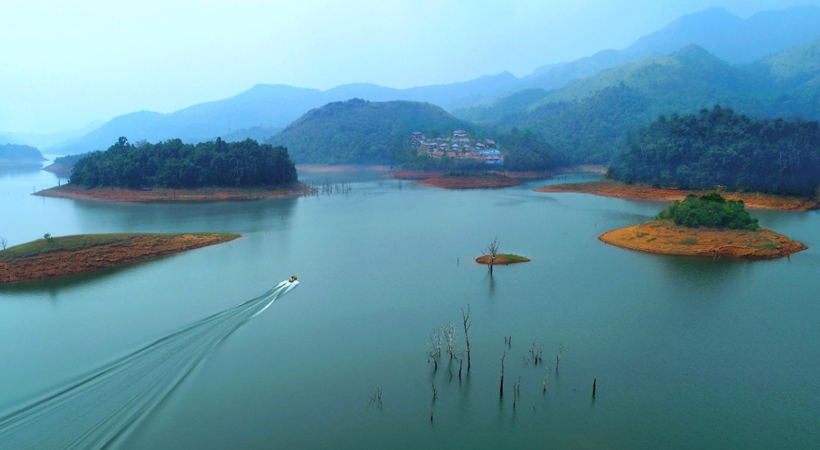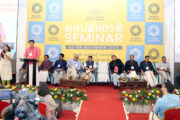Green shoots start to dot Kerala’s domestic travel map

DJ Hector
It’s a trickle. But that’s enough for now.
Green shoots have started to dot the domestic tourism map of Kerala, with guests braving the pandemic to light up their travel plans.
Let’s take the example of Gokul and Suramya, a honeymooning couple, who decided to drive all the way from Thiruvananthapuram to Wayanad to beat the lockdown blues. It wasn’t an easy decision to make, considering the surge in coronavirus cases not just in Kerala but across India itself. Their parents and relatives had suggested some places near Thiruvananthapuram for their stay. A few others did not want them to undertake the trip at all.
But that was not what the couple wanted. Gokul was clear that he wanted to drive out to a faraway location and decided to hunt for a suitable destination. But it was difficult for them to zero in on a place which offered the best of services while also maintaining high safety standards in view of the coronavirus pandemic.
A friend had earlier visited the picturesque Contour Island Resort & Spa, nestled amidst the Banasura Hills in Wayanad. He had given good feedback about the property and Gokul decided to do a bit more research on the destination. Wayanad, with its lush forests and wildlife sanctuaries, was a place Gokul wanted to explore with his wife. But he wanted to be sure of the choice of resort and hence decided to make a video call.
“Sometimes, what you see on a website is not what you get in reality. That’s why I thought of asking for a virtual tour. Soon, the decision was made and we packed our bags and food, and set off to Wayanad early morning on Thursday. We reached Contour by around 3 pm,” said Gokul, who is a 28-year-old banker. The couple stayed at Wayanad for two nights, before returning on Saturday.
“The management at Contour did a great job. The courteous service, high quality of food, the verdant environment and the sheer natural beauty of the place made it a great experience for us,” said Gokul. His biggest worry was addressed most professionally. “We felt safe at Contour. The staff wore masks and other protective equipment at all times. They insisted that we do the same, and we were only too happy to oblige. Social distancing was maintained and the staff did not shake our hands even once. A namaste was good enough.”
Earlier, the couple had booked tickets to Malaysia and Singapore for their honeymoon but had to pull out due to the virus outbreak. “We are happy that we cancelled the trip. There can’t be a safer place than Kerala to do a vacation. The state government’s health care policies and Kerala Tourism’s responsible tourism initiatives have ensured that all travellers feel confident and safe,” Gokul said.
According to reports coming in, there are other tourists too, exploring various travel destinations in and around Kerala. Domestic guests have checked into resorts in Thekkady, Alleppey and Kovalam, which are some of the vacation spots of the state. So, the momentum is building.
Ever since airlines around the world grounded their flights due to the pandemic, global tourism boards have pinned their hopes on domestic tourism. Kerala, for instance, is all set to roll out a short-haul domestic tourism campaign to draw visitors. Holland, especially Amsterdam, which often complains of excessive international travellers “overrunning their city centres” wants domestic tourists to reclaim their ground. Venice is another hotspot that appears overcooked by international tourism. Residents and local businesses have become fringe players in the city, where population has been steadily dwindling while inbound tourists have grown in leaps and bounds.
Just to do a reference check, back in 2009, international tourist arrivals fell by 4% as a result of the global financial meltdown. However, the following year the industry surged back with 6.7% growth. This time, the tourism industry isn’t that confident as the lingering effect of the pandemic may continue well into 2021 and possibly even 2022.
With the downswing in international travel, various countries would like to see domestic tourism step up to the challenge. India’s tourism minister Prahlad Singh Patel has said the plan is to promote off-beat destinations and wildlife, among domestic travellers. The anticipation is people may like travelling to places which offer natural social distancing. India is trying to encourage tourists to visit neighbourhood attractions, indulge in day excursions, weekend getaways and driving holidays to support the local economy.
Kerala, India’s premier tourism destination, is also chalking out similar strategies. State tourism minister Kadakampally Surendran and tourism secretary Rani George have been trying to promote short-haul vacations, by attempting to draw in crowds from smaller towns and cities, not just from Kerala, but also from neighbouring states.
According to statistics released by Kerala Tourism, out of the total number of 1,95,74,004 tourists who came into the state last year, 1,83,84,233 were domestic travellers. But this year, with international traffic almost next to nil, the onus is on authorities to drive domestic tourism to spruce up revenues.
India’s travel and tourism industry employs more than 40 million people, accounting for 8% of the total employment opportunities. In 2019, the sector contributed 9.3% to India’s Gross Domestic Product (GDP), and secured 5.9% of the total investments. This year’s pandemic will drive deep wounds into those numbers.
In May, the UN World Tourism Organisation (UNWTO) said that earnings from international tourism might be down 80% this year as against last year’s figure of $1.7 trillion and that 120 million jobs could be lost. While the scenario has improved in the following weeks, the industry is still in choppy waters.
The World Travel & Tourism Council (WTTC) has requested governments around the world to act quickly to save travel and tourism jobs that could be lost due to the prolonged lockdown. Part of the answer lies in energising domestic travel by ensuring safety and hygiene at prominent tourist destinations. The other half revolves around various governments releasing timely funds to stabilise the global travel economy.






